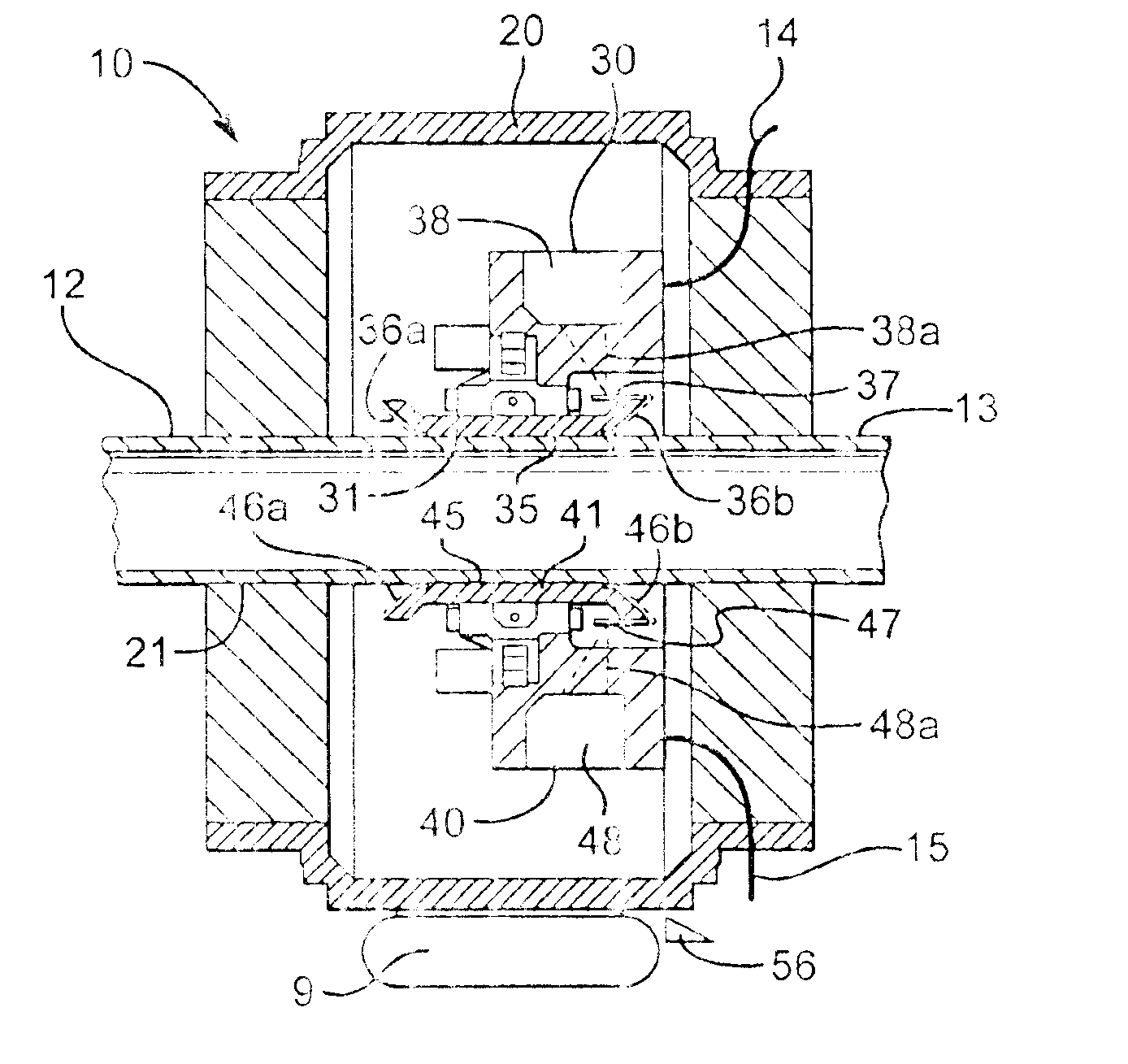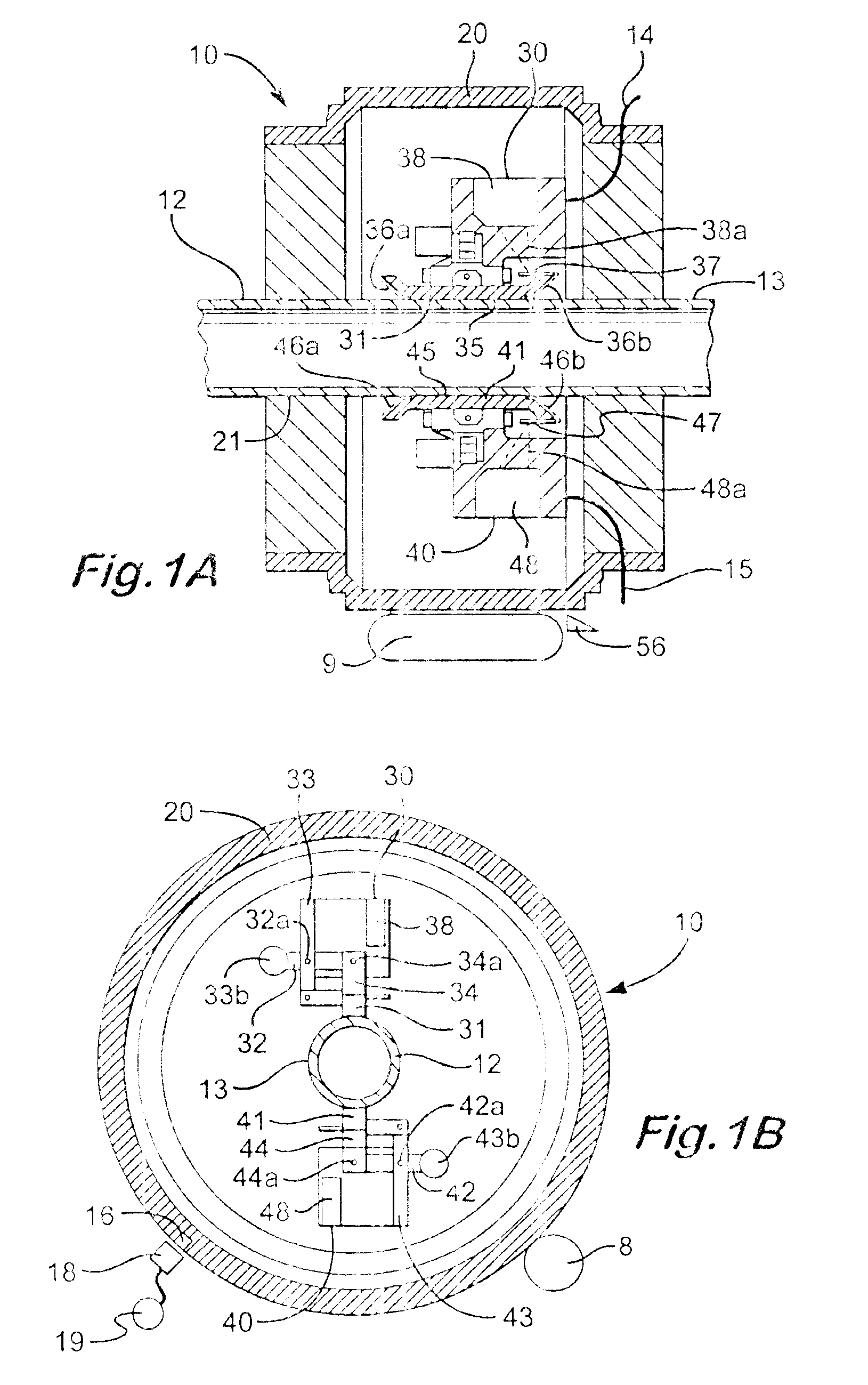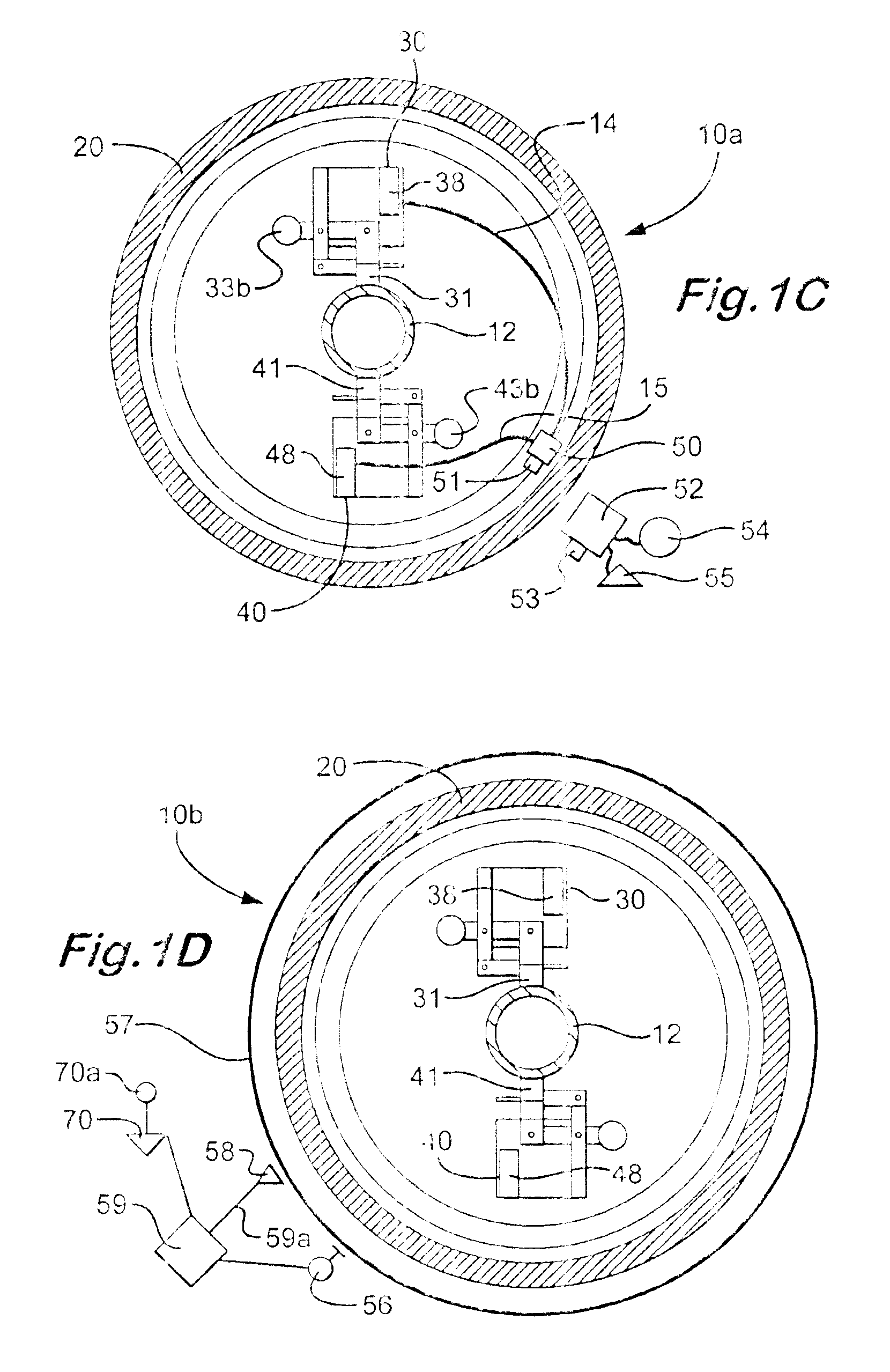Tubular ovality testing
a technology for measuring the diameter and ovality of tubulars, applied in the direction of instruments, using mechanical means, material analysis, etc., can solve the problems of inability to manually check the diameter and ovality of oilfield tubulars, inability to achieve manual testing of tubular diameter and ovality, and a relatively long time period for recalibration equipment, etc., to eliminate the effect of tubular off-centering
- Summary
- Abstract
- Description
- Claims
- Application Information
AI Technical Summary
Benefits of technology
Problems solved by technology
Method used
Image
Examples
Embodiment Construction
FIGS. 1A and 1B show schematically a system 10 according to the present invention which has a rotatable head 20 mounted on suitable rotating and movement apparatus 9 (shown schematically; e.g., any known suitable head movement and rotation apparatuses may be used) for rotating the rotatable head 20 around a pipe 12 (or any tubular to be inspected) which is movable through a central opening 21 of the rotatable head 20.
A pair of sensor devices 30 and 40 are connected to the head 20. The sensor devices 30, 40 each has a detecting shoe 31, 41, respectively, each has an arm 32, 42 which is pivotally mounted at pivot points 32a, 42a, respectively to supports 33, 43. The supports 33, 43 are connected to the head 20. Optionally, a counterweight (or counterweights)33b, 43b, respectively, may be used with the detecting shoes. Shoe mounts 34, 44 are pivotally mounted to arms 32, 42, respectively, at pivot points 34a, 44a, respectively.
The detecting shoes 31, 41 are positioned and configured so...
PUM
 Login to View More
Login to View More Abstract
Description
Claims
Application Information
 Login to View More
Login to View More - R&D
- Intellectual Property
- Life Sciences
- Materials
- Tech Scout
- Unparalleled Data Quality
- Higher Quality Content
- 60% Fewer Hallucinations
Browse by: Latest US Patents, China's latest patents, Technical Efficacy Thesaurus, Application Domain, Technology Topic, Popular Technical Reports.
© 2025 PatSnap. All rights reserved.Legal|Privacy policy|Modern Slavery Act Transparency Statement|Sitemap|About US| Contact US: help@patsnap.com



